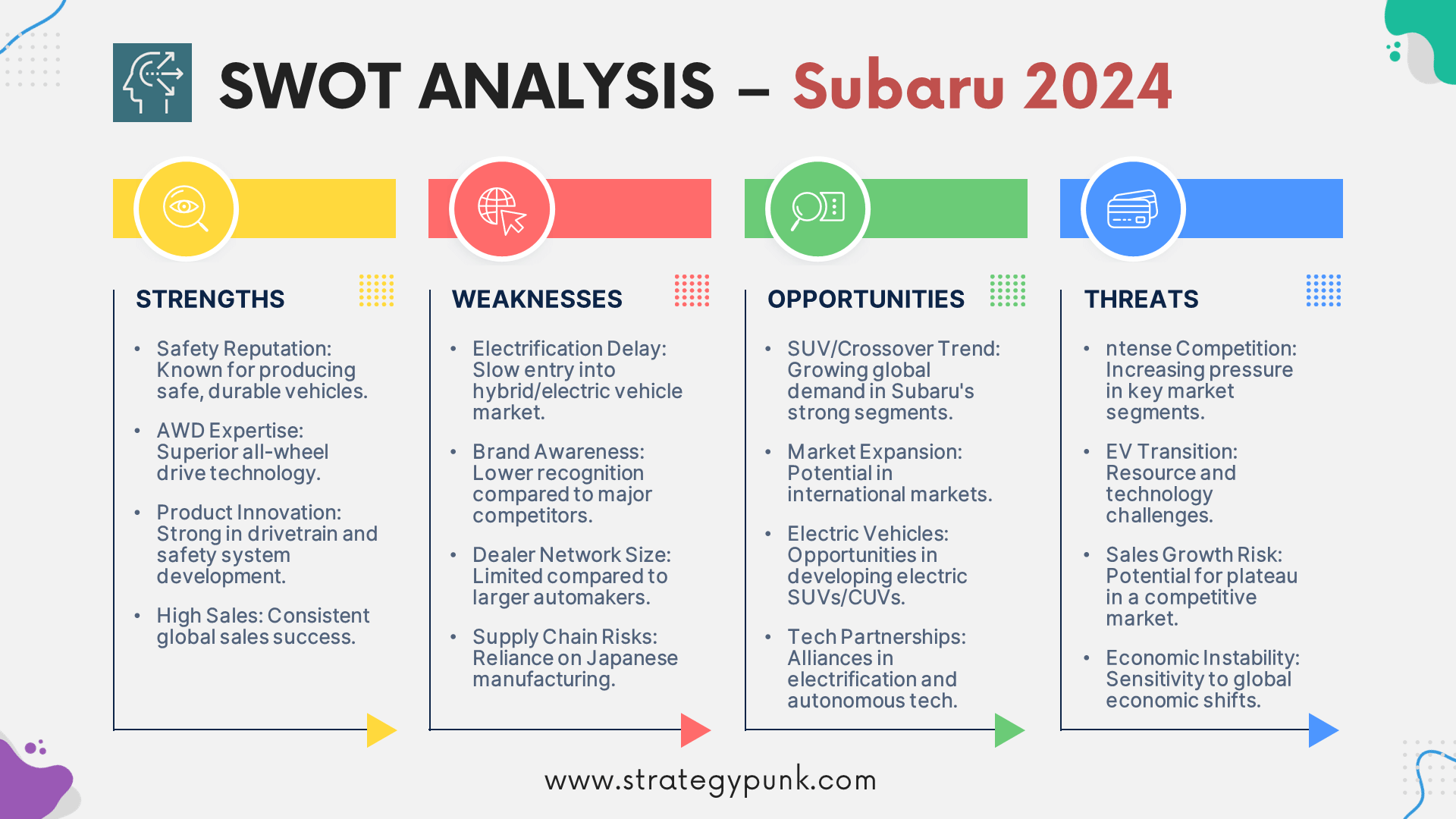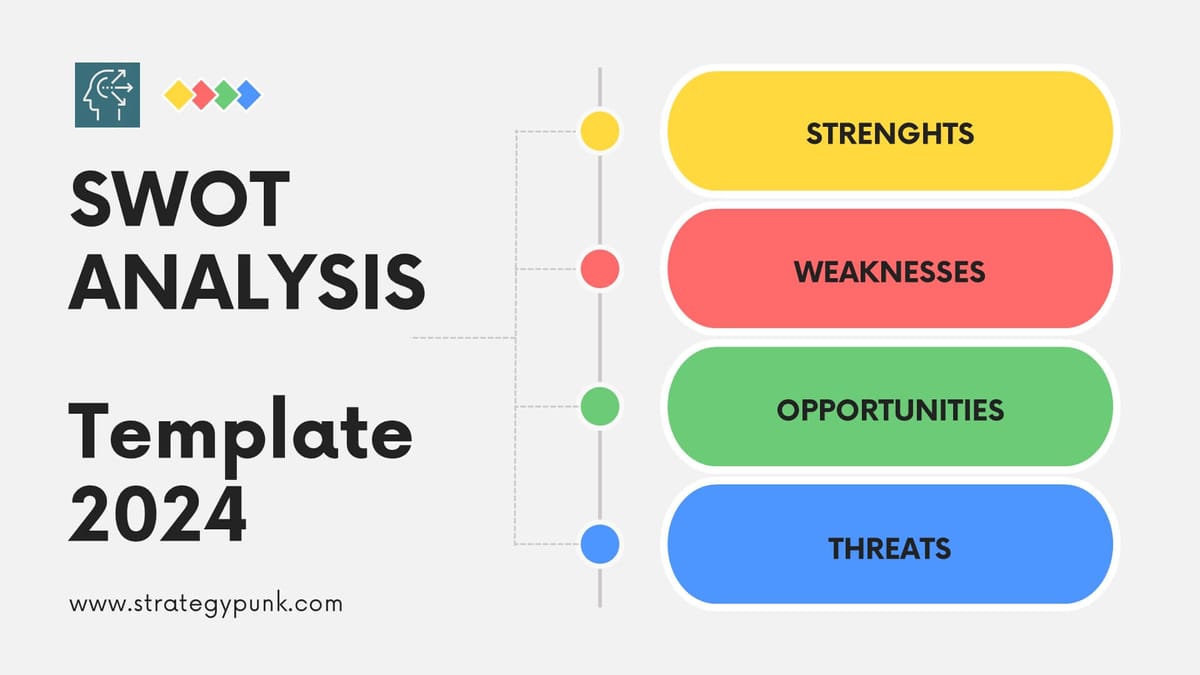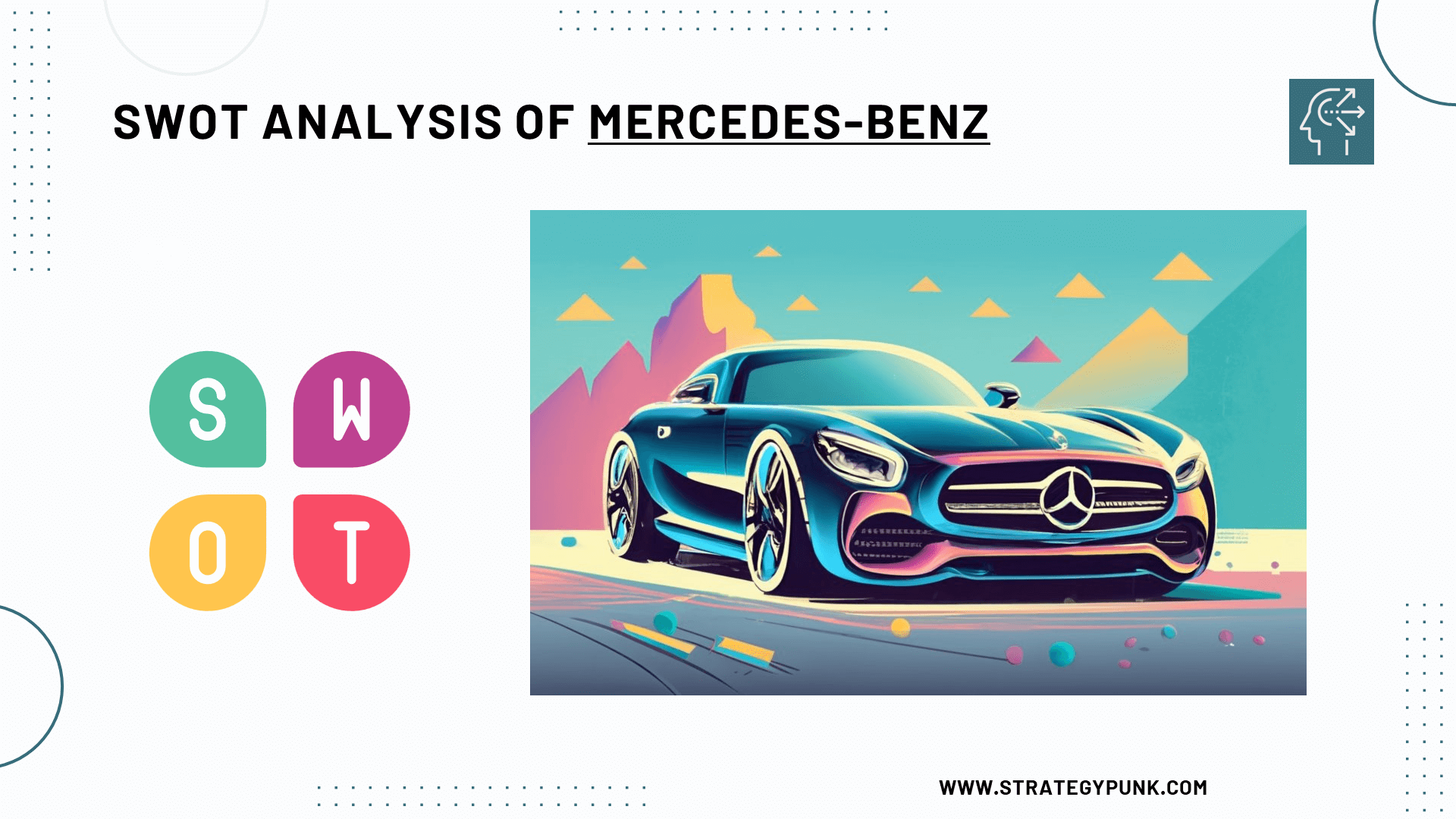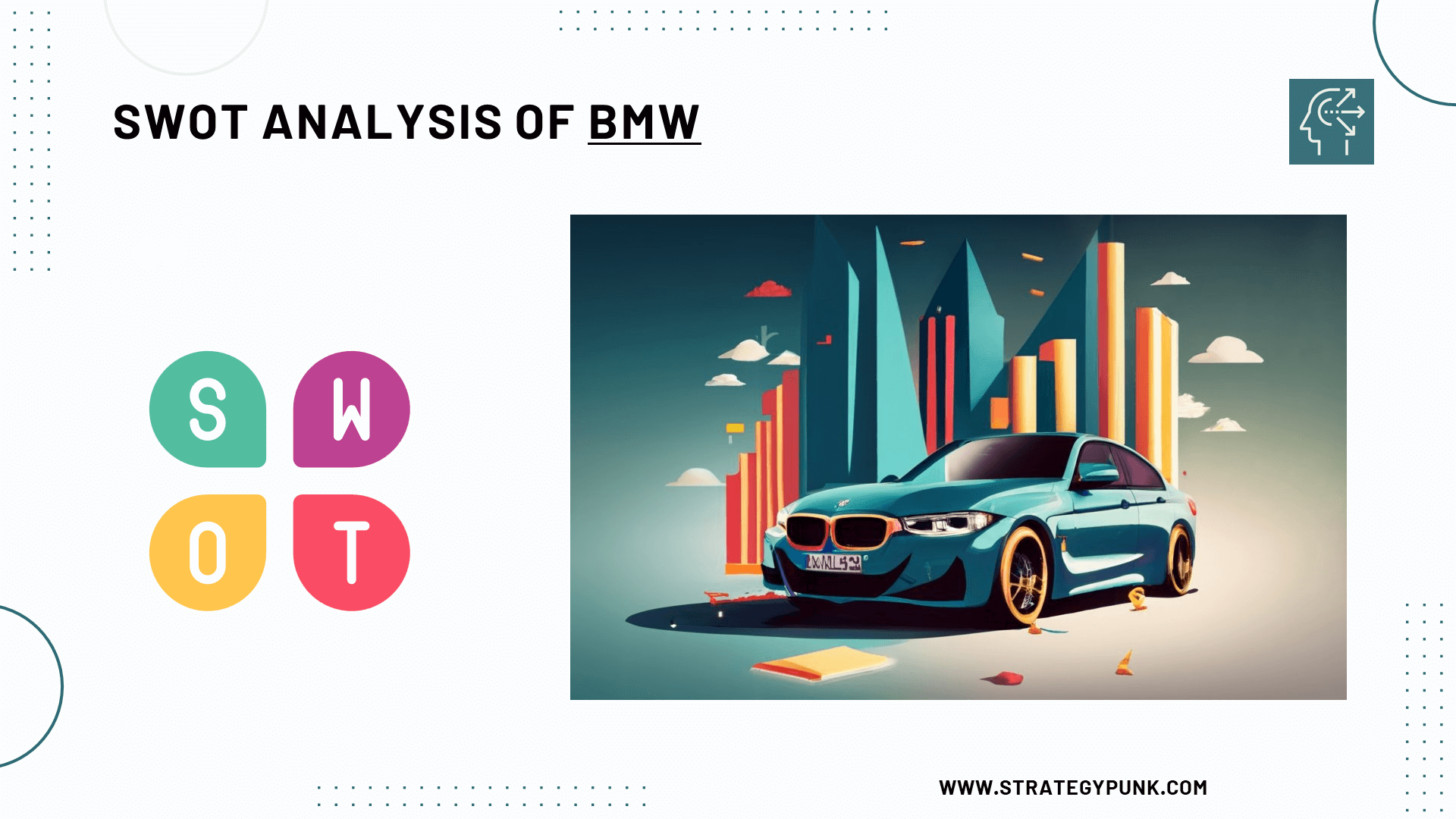Strategic Insights 2024: A SWOT Analysis of Subaru
Download the free PowerPoint template 'Strategic Insights 2024: A SWOT Analysis of Subaru.' Gain an in-depth understanding of Subaru's strengths, weaknesses, opportunities, and threats in 2024. Ideal for business analysts and automotive industry professionals.

Introduction
The automotive industry is transforming rapidly. Electric vehicles, self-driving cars, and changing consumer preferences reshape the marketplace.
In this dynamic environment, automakers must constantly evaluate their strengths, weaknesses, opportunities, and threats to stay competitive.
One company navigating these changes is Subaru, known for its rugged, all-wheel drive vehicles beloved by outdoor enthusiasts. As Subaru charts its path forward, examining its strategic position provides valuable insights.
This article presents an in-depth SWOT analysis of Subaru in 2024.
A Brief History of Subaru
Subaru’s origins trace back to 1917 when it was founded as Nakajima Aircraft Company, a manufacturer of airplanes in Japan.
In 1953, the company changed its name to Fuji Heavy Industries and began producing vehicles under the Subaru brand.
Critical milestones for Subaru include:
- 1968: Entered the US market with the Subaru 360 model
- 1972: Introduced the Leone, one of the first mass-produced front-wheel drive vehicles
- 1989: Launched the Legacy model, which helped establish Subaru in North America
- 1995: Unveiled the Outback wagon/SUV crossover, creating a new market niche
- 2014: Opened a manufacturing plant in Indiana to build vehicles for North America
Today, Subaru continues to advance its technology and expand its lineup of rugged, dependable vehicles.
Financials of Subaru 2023
In the fiscal year 2022 ending March 2023, Subaru reported:
- Net sales of 3.8 trillion yen ($28 billion), up 17% year-over-year
- Global vehicle production of about 730,000 units
- Operating income of 250 billion yen ($1.9 billion), with an operating margin of 6.6%
- Record high net income of 202 billion yen ($1.5 billion)
Subaru maintains a strong balance sheet, ending FY2022 with around 1.5 trillion yen ($11 billion) in cash and short-term investments. This provides Subaru with financial flexibility to invest in new products and technologies.
In-Depth SWOT Analysis of Subaru 2024
To assess Subaru’s strategic positioning in 2024 and beyond, we will analyze its significant strengths, weaknesses, opportunities, and threats.

Subaru’s Strengths
- Brand reputation for safety, capability, and durability: Subaru has cultivated a reputation for building safe, rugged, and dependable vehicles over the past 50+ years. This inspires brand loyalty among outdoor enthusiasts.
- Symmetrical all-wheel drive expertise: Subaru’s symmetrical AWD system, developed in-house, provides excellent traction and control in inclement weather and off-road conditions. This is a crucial technology advantage.
- Product development capabilities: Subaru's engineering prowess in drivetrain technologies, vehicle dynamics, and active safety systems, such as EyeSight driver assist, allows product innovation.
- Strong sales momentum: Subaru’s record sales and profits demonstrate strong demand for crossovers, SUVs, and sedans with standard AWD across global markets.
Subaru’s Weaknesses
- Lagging in electrification: Subaru has been slow to launch hybrid and electric vehicles compared to competitors. The Solterra EV, jointly developed with Toyota, is Subaru’s first dedicated BEV.
- Lower brand awareness: While Subaru enjoys loyalty among current owners, its brand awareness lags behind larger competitors. So there’s an opportunity to attract new customers.
- Dealer network disadvantages: Subaru’s smaller dealer network can be a weakness, as it has fewer retail touchpoints and can handle servicing for rapidly growing sales.
- Supply chain exposure: With manufacturing heavily concentrated in Japan, Subaru’s supply chain remains vulnerable to disruptions from natural disasters that can impact production capacity.
Subaru’s Opportunities
- Growing SUV and crossover segments: Global demand for SUVs and CUVs continues to expand, right in Subaru’s sweet spot with the Outback, Forester, and new 3-row models.
- New and emerging markets: Compared to Japanese rivals Toyota and Honda, Subaru still has a growth runway in many international markets, as it has expanded its product portfolio and dealer networks.
- Diversification into EVs: Subaru has an opportunity to translate its expertise in AWD and driving dynamics into compelling new BEV CUVs and SUVs, creating a new dimension for the brand.
- Partnership opportunities: Subaru could forge new technology partnerships in electrification, autonomous driving software, and mobility services to access innovation and share costs.
Subaru’s Threats
- Intensifying competition: Key competitors like Toyota, Honda, Nissan, and Volkswagen are mounting more vital challenges in Subaru’s key segments with new hybrid and electric crossover models.
- EV transition complexity: The industry’s shift towards electrification poses engineering and manufacturing complexity, requiring significant investments that pressure automakers’ profits.
- Potential sales plateau: With Subaru’s recent sales growth outpacing the industry, its momentum could plateau or decline if the overall market contracts or competition erodes share gains.
- Macroeconomic instability: Car sales depend on solid consumer confidence and spending power. An economic slowdown could disproportionately affect Subaru if buyers retreat to lower prices.
Subaru SWOT Analysis Summary

In summary, Subaru possesses meaningful strengths centered on its brand equity, AWD technologies, and product development capabilities that inspire loyalty among outdoor-oriented buyers.
However, lagging moves into electrification and intense competition raise risks that Subaru’s sales growth could slow in key segments. Pursuing opportunities in booming SUV/CUV categories and forging partnerships can help Subaru extend its success.
However, the company will need to continue building capabilities in EVs and emerging mobility areas to sustain market leadership in the future.
Internal Factors
Subaru’s internal strategic factors offer both advantages and challenges. On the one hand, Subaru has forged an admired brand reputation and possesses specialized expertise in AWD systems and vehicle dynamics. Its record profits also provide resources to invest in new technologies and products to satisfy shifting consumer demands.
However, Subaru has not kept pace with industry electrification trends. Developing competitive hybrid and electric models quickly is imperative, though this will pressure near-term profits. How successfully Subaru manages this transition will impact its future competitiveness.
External Factors
Externally, Subaru faces a vehicle market with several positive trends, like surging CUV/SUV sales and untapped growth potential internationally. However, the competitive landscape is also intensifying quickly.
As rivals like Toyota, Honda, and Volkswagen expand their hybrid/EV crossover lineups targeting outdoor enthusiasts, they could erode Subaru’s niche dominance if its product portfolio fails to evolve.
Macro forces also pose threats if global economic instability materializes. Car buying is discretionary, so fewer buyers purchase pricier AWD models during downturns. While Subaru looks well-positioned currently, its management must regularly re-evaluate external dynamics shaping the automotive landscape.
Frequently Asked Questions
What is Subaru’s core competitive advantage?
Subaru’s core historical advantage is its expertise with symmetrical all-wheel drive systems and vehicle dynamics that excel in inclement weather and off-road conditions. This has differentiated Subaru products and cultivated loyalty among outdoor-oriented buyers.
What is Subaru’s main strategic challenge today?
Subaru’s most significant near-term strategic imperative is developing competitive hybrid and electric vehicles. Subaru has lagged behind industry electrification trends, so quickly expanding its EV/PHEV lineup is vital to remaining relevant as zero-emission models gain share.
What is Subaru's overall business strategy?
Subaru's strategy is to build safe, reliable, affordable all-wheel-drive vehicles. They aim to differentiate themselves by offering standard AWD across their lineup, while most competitors offer it as an upgrade5.
How does Subaru plan to stay competitive in the growing EV market?
Subaru plans to introduce its first all-wheel drive EV, the Solterra SUV, in 2022. They also plan a plug-in hybrid and full EV versions of other models. Their AWD expertise gives them a competitive edge in EVs5.
What is Subaru's main competitive advantage?
Subaru's leading competitive edge lies in its expertise with all-wheel drive systems. Focusing on safety and reliability, Subaru has carved out a niche in the market.
How does Subaru aim to keep pricing competitive?
Subaru keeps pricing competitive by maintaining operational efficiency, controlling costs across manufacturing and the supply chain, and using technology improvements to boost quality and value.
Subaru SWOT Analysis PowerPoint Template
free and fully editable PPT template
A SWOT analysis evaluates the strengths, weaknesses, opportunities, and threats impacting a company.
This free editable PowerPoint template provides a SWOT analysis framework to evaluate Subaru's internal strengths and weaknesses and external opportunities and threats.
Subaru SWOT Analysis PDF Template
Subaru SWOT Analysis PowerPoint Template
Feel free to customize the template by adding your content, images, and visuals.
Discover more
New! SWOT Framework & Free PPT Template - 2024 Edition
Dive into the 2024 Edition of our SWOT Analysis guide, complete with a free PowerPoint template. This resource covers the essentials of conducting a SWOT analysis, its benefits, and practical application tips, including a case study on Mercedes Benz.

SWOT Analysis of Mercedes-Benz: Free Templates and In-Depth Insights 2023
Mercedes-Benz remains a beacon of excellence and innovation in the ever-evolving luxury automotive industry. Our latest SWOT Analysis for 2023, available as a free PowerPoint download, meticulously examines the brand's current standing and future trajectory.

SWOT Analysis of BMW: Free PPT Template and In-Depth Insights 2023
Dive deep into BMW's SWOT Analysis with our free PPT template and detailed insights for 2023. Explore BMW's strengths, like its revered brand reputation and cutting-edge technology, alongside its weaknesses, including a limited EV portfolio.







